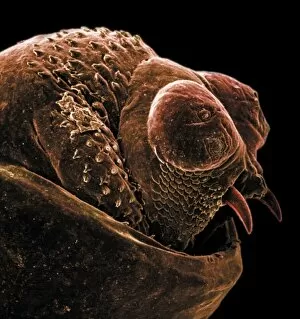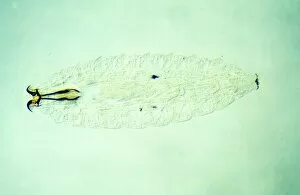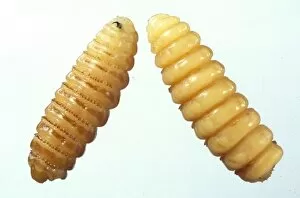Bot Fly Collection
"Discovering the Intriguing World of Bot Flies: From Anus to Nasal Passages" Did you know that bot flies, also known as Oestridae
All Professionally Made to Order for Quick Shipping
"Discovering the Intriguing World of Bot Flies: From Anus to Nasal Passages" Did you know that bot flies, also known as Oestridae, are a fascinating group of insects with diverse species and intriguing life cycles? These unique creatures have adapted to various hosts, including humans, horses, camels, and even rhinoceroses. One notable member is the Cephalopina titillator or camel nasal botfly larvae. As its name suggests, this particular species infests the nasal passages of camels. Similarly, Dermatobia hominis targets humans as their preferred host - an unsettling thought indeed. The horse botfly (Gasterophilus) larvae pose a threat to equines worldwide. The life cycle of these botflies begins when adult females lay eggs on suitable surfaces close to potential hosts. Once hatched, the larvae attach themselves externally or internally depending on the species. For instance, Dermatobia hominis burrows into human skin while Gasterophilus prefers attaching itself to horse stomach linings. As peculiar as it may sound, some bot fly larvae can be found near their host's anus too. This adaptation allows them easy access for feeding and growth before eventually detaching and pupating in soil or other protected environments. Amongst all these different types of botflies mentioned earlier – from camel nasal bots to human-infesting ones – one thing remains constant: their ability to adapt and survive within their chosen hosts' bodies. It serves as a reminder that nature's diversity never ceases to amaze us. So next time you come across any mention of "bot flies, " remember there is more than meets the eye - from Dermatobia hominis causing discomfort in humans to Gyrostigma rhinocerontis residing in rhinoceros stomachs. These incredible creatures continue to captivate scientists and entomology enthusiasts alike with their unique adaptations and life cycles.
















